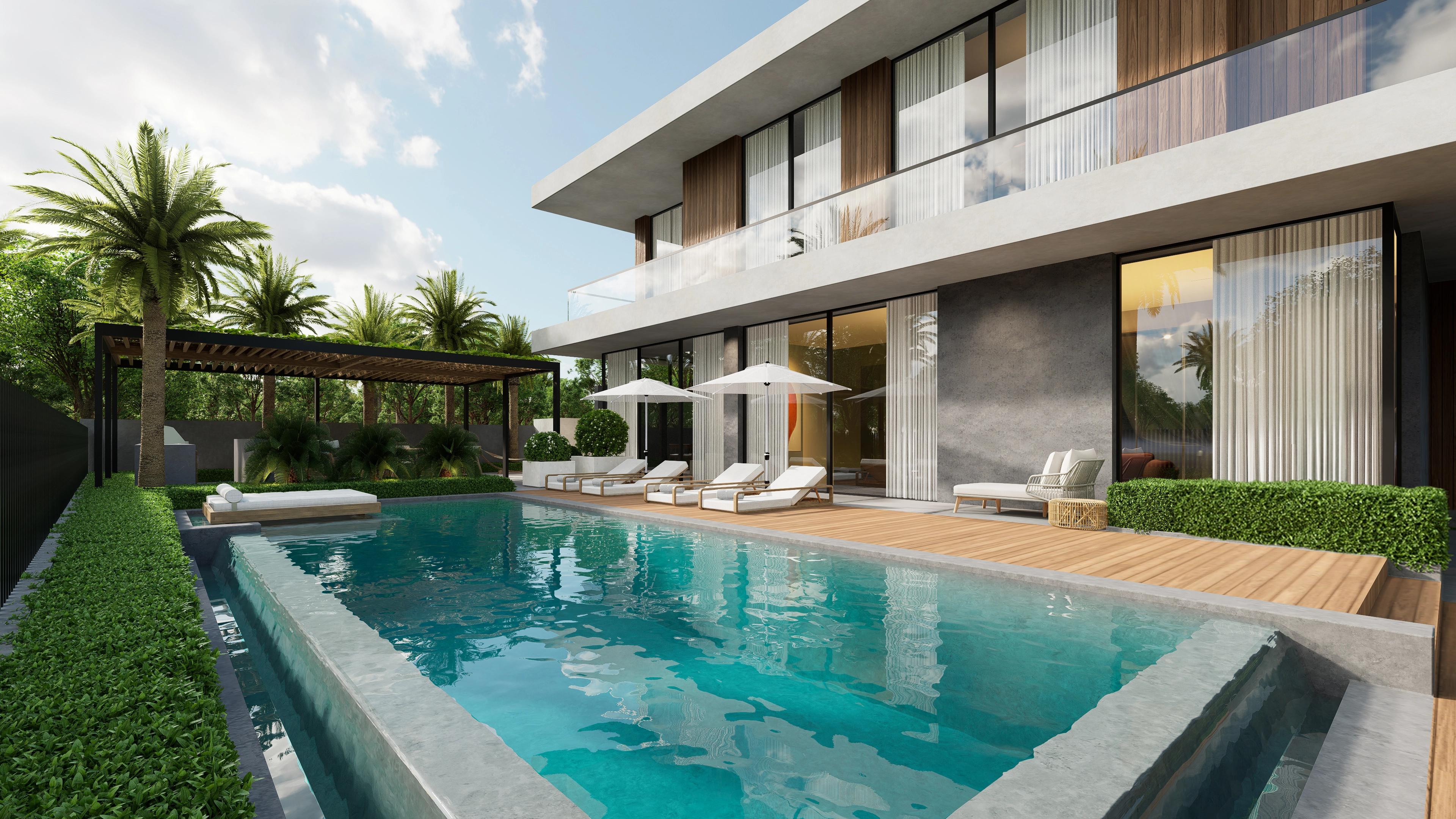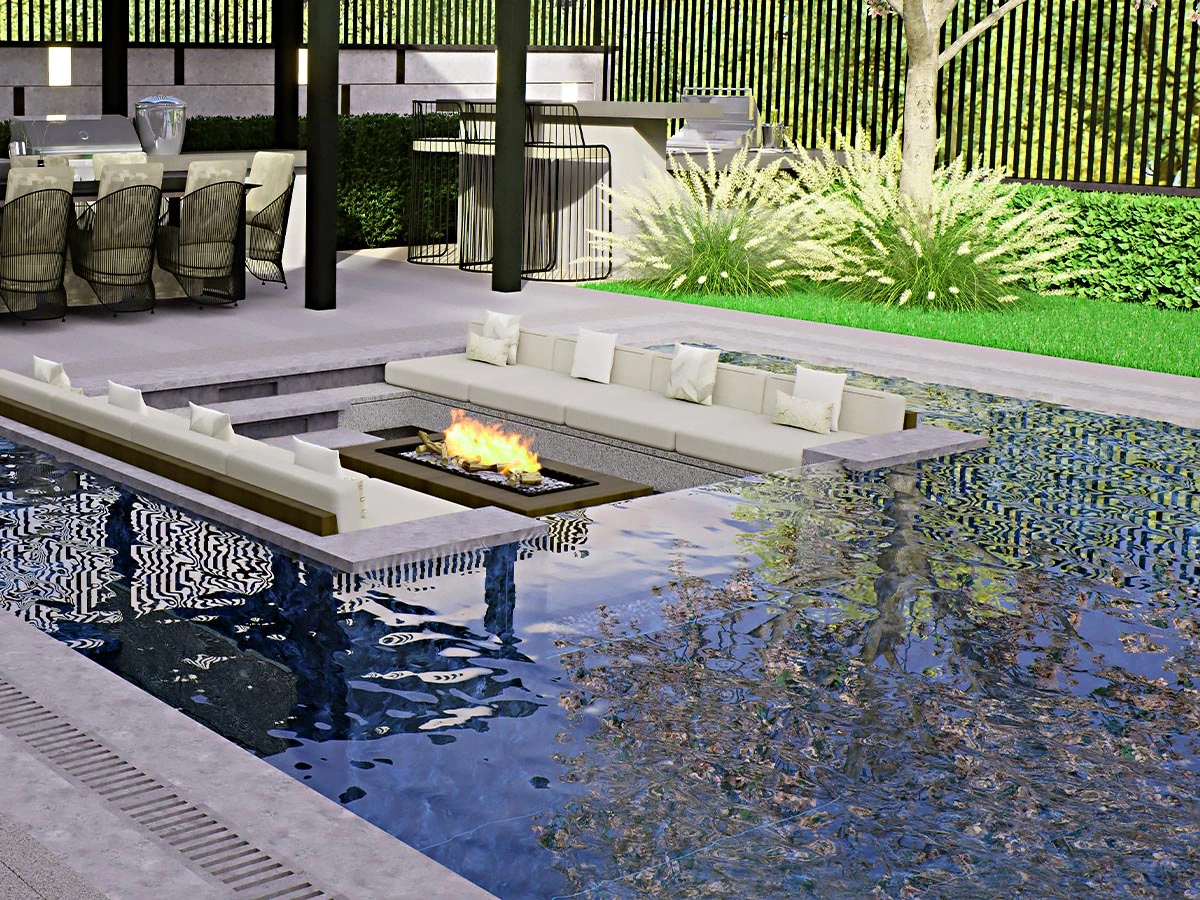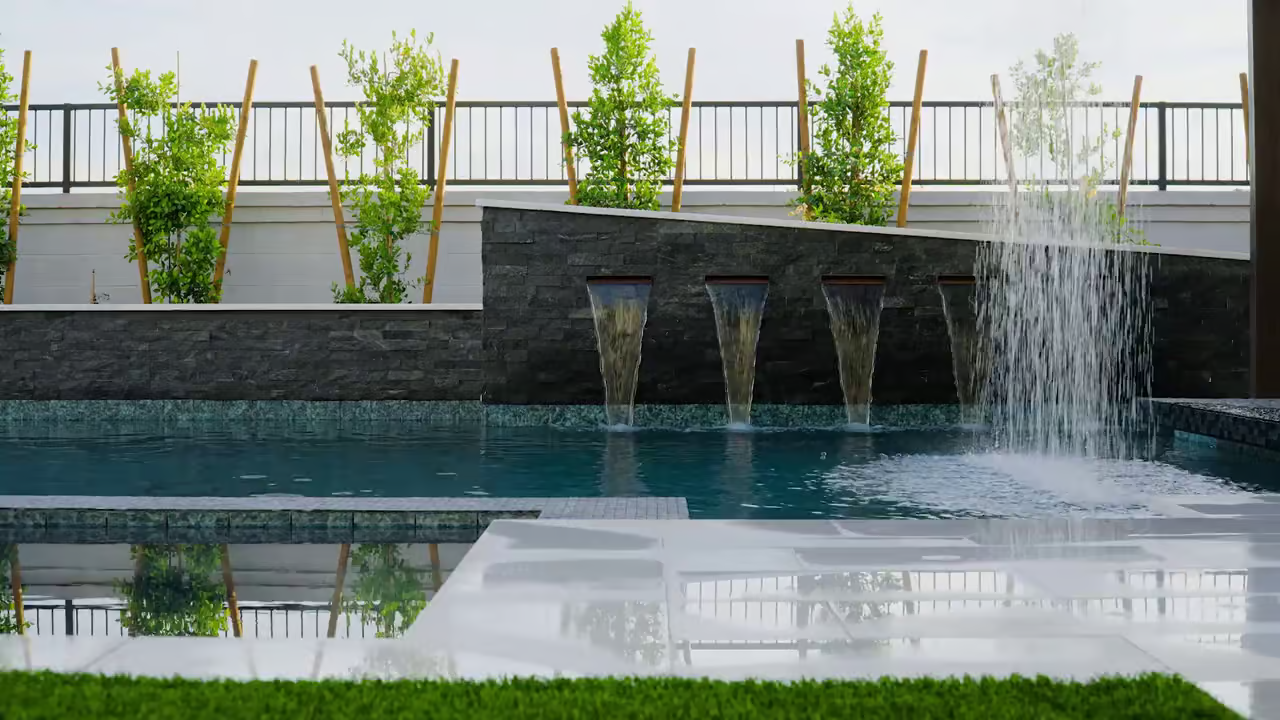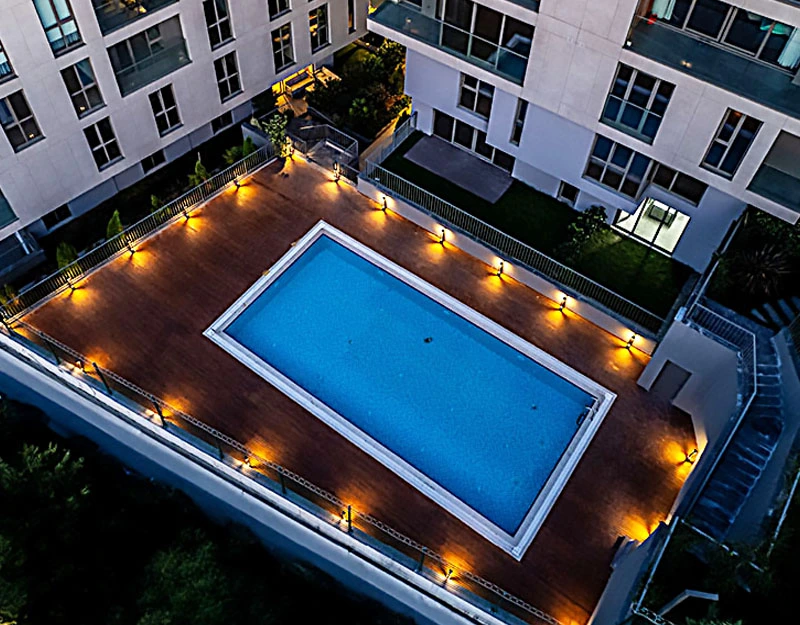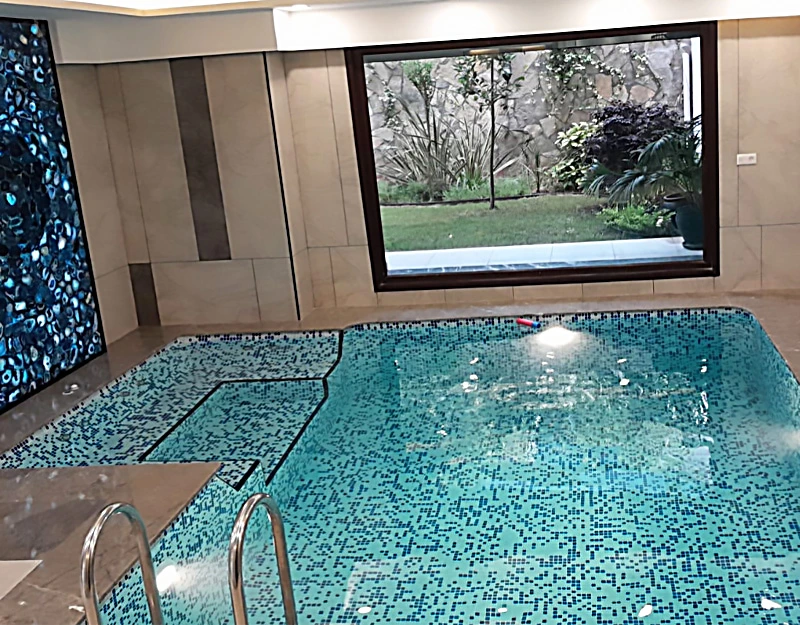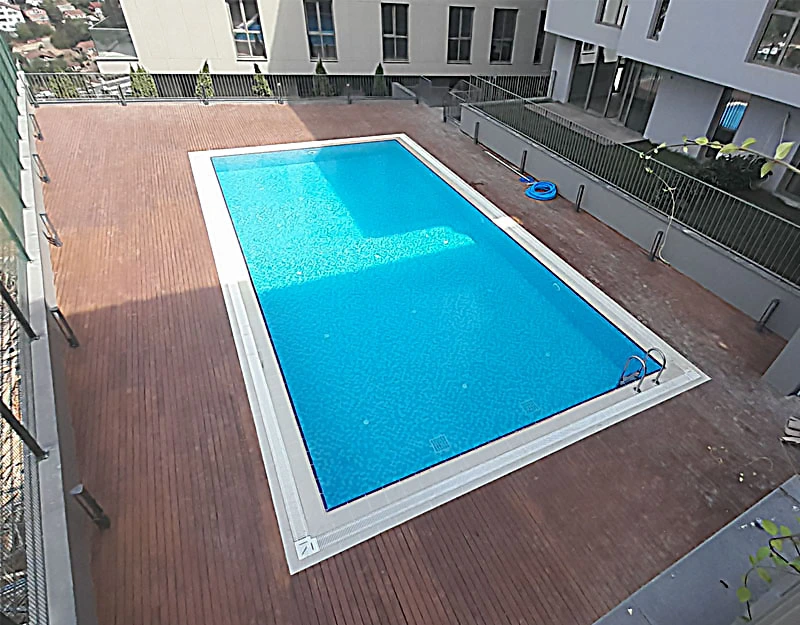1. The Role of Water Features within Architecture & Landscape
The triad of architecture — landscape — water forms a tightly interlinked system that defines how an outdoor place looks, feels, and functions. Architecture sets structure, scale, and movement; landscape adds living texture, shade, habitat, and seasonal change; water introduces reflection, motion, sound, microclimate relief, and a sense of calm. When these three are composed together—rather than treated as separate layers—they create legible paths, frame memorable views, moderate heat and glare, and invite people to pause and engage with the space. To make this synergy practical and repeatable, we can examine it in three parts:
1.1 Dialogue with Architecture
- A water feature can act as a visual interface in threshold spaces such as entrances, foyers or recreation areas.
- Through reflection, glass façades, sky, trees and built forms multiply visually—lightening the mass and aligning it with context.
- Water balances the plane between “ground” and “building”, mediating nature ↔ structure.
- In some contemporary projects, a shallow reflective plane mitigates perceived heat radiation around rotating spaces or façades.
1.2 Centering the Landscape
- Motion, sound and reflection inject life into the “vegetation + hardscape” equation.
- Water features can be a quiet centre or a dynamic focal point guiding circulation and enriching experience.
- Seating facing the water turns landscape from background into a participatory environment.
1.3 Human & Experience Focus
- Sound and ripples evoke restoration and meditation, encouraging people to pause rather than just pass through.
- Where prestige or corporate identity matters, water reinforces meaning—historically symbolising purity and wealth.


